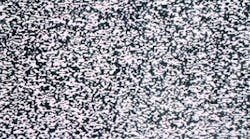Ian Verhappen is a contributor and blogger for Control and Industrial Networking. He has 25+ years experience in instrumentation, controls and automation. You can email him at [email protected] or check out his Google+ profile.
The bane of all networks is "noise." This is especially true for wireless networks as they do not have a conductor to guide and contain the signal. Normally, cables also are shielded and twisted to reduce susceptibility to external factors.
SEE ALSO: Tune Out the Network Noise
A Cisco whitepaper, "20 Myths of Wi-Fi Interference: Dispel Myths to Gain High-Performing and Reliable Wireless," includes statistics that technical support engineers at a major Wi-Fi infrastructure vendor reported to Cisco. In a service call to a major customer, they found almost "20 sources of interference, contributing to over 50% of the problems on the customer's Wi-Fi network," and "one out of every three Wi-Fi problems our service technicians get called out for is related to interference." In addition, a recent survey of 300 customers found that "troubleshooting interference won 'top honors' as the biggest challenge in managing a Wi-Fi network."
In the whitepaper, Jupiter Research reports that 67% of all residential Wi-Fi problems are linked to interferring devices such as cordless phones, baby monitors and microwave ovens. The correlation is likely valid in an industrial setting because many other types of devices also emit in the unlicensed band, including microwave devices, cordless and cellular phones, Bluetooth devices, wireless video cameras, Zigbee devices, fluorescent lights, WiMAX, etc. Even bad electrical connections can cause broad RF spectrum emissions. Compounding the interference problem is that this noise is often intermittent. In addition, the interference might occur only at certain times of day, which is easier to determine than truly random events, such as larger vehicles occasionally blocking the transmission path.
Fortunately, the solution to noise problems can be addressed by following the simple physics of wireless network design.
Typical issues to be aware of when designing for wireless in industrial settings include Fresnel effect, diffraction, scattering, reflection, moisture/humidity, trees (leaves or no leaves), frequency, etc.
Diffraction occurs when the radio path between the transmitter and receiver is obstructed by a surface that has sharp irregularities/edges and isn't too close to either antenna. The result is that the Fresnel zone acts to reproduce secondary "shadow" Fresnel wavelets that, although severally limited in signal strength to the original, allow waves to bend around the obstacle, even when line-of-sight does not exist. Higher frequencies bend less than lower frequencies.
A reflected wave can increase or decrease the signal level at the receiver. In many cases, the received signal level tends to be very unstable. This is commonly referred to as multipath fading.
The throughput (speed) of a wireless system is inversely proportional to the distance between the transmitter and the receiver. Therefore, everything being equal, the closer a wireless client is to a transmitter, the greater the throughput.
However, when noise causes the network to retransmit packets, distance has a double whammy of more "path" through the contaminating environment.
Some networks also are less susceptible to noise than others. IEEE 802.11n supports multiple-input multiple-output (MIMO) antennas, and is able to use signal reflections to improve the signal, which effectively reduces the zone of interference associated with the device to a smaller area by a factor of two versus a traditional system.
A useful source of information on industrial wireless network design is the ISA-100's original standard document, "ISA-TR100.00.01-2006 The Automation Engineer's Guide to Wireless Technology Part 1: The Physics of Radio, a Tutorial." Its objective is to give readers a realistic understanding of how radio links can complement and/or replace wired connections, the factors influencing link range, and the pitfalls for the unwary.
Industry realizes that, as we increasingly rely on wireless for a wide range of functions, guidance on how to overcome its challenges is needed. The Telecommunications Industry Assn.'s (TIA) TR-8.18 Engineering Committee on Wireless Systems Compatibility — Interference and Coverage issued a call for interest on May 1, 2013 to develop a series of documents addressing "Wireless Communication Systems — Performance in Noise and Interference Limited Situations."




